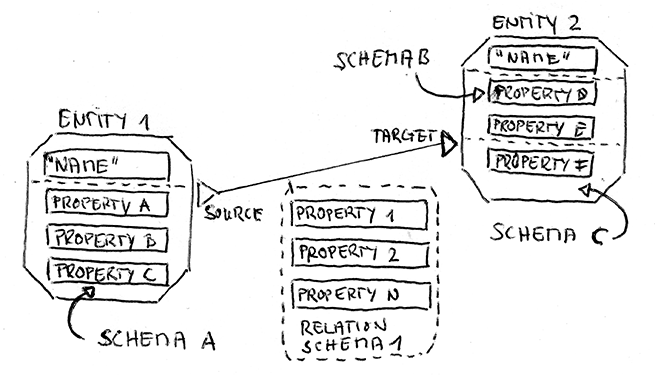Technical Documentation
The design goal for grano is to support the following basic features:
-
Store a graph of entities and relations, where each relation connects two entities (a source and target, i.e. a directed graph). There can be muliple relations between two entities.
-
For each entity or relation, a set of properties is stored which signify individual attributes of an element. Properties are formalized using a schema, which specifies the set of property names that are available. Each relation and entity is associated with exactly one schema.
-
Each property also stores information on who set it, when and what URL they gave as a source for this fact. Previous values of the same property are kept and can be reconstructed.
-
Entities have a mandatory property, name, which is used to identify them. When attempting to find an entity, historic versions of the name property are considered aliases and will also match.

To store data, grano maps the graph onto a relational database schema. While this may not be ideal in terms of performance, it means that the underlying model is well understood and can be filtered, aggregated and projected onto a traditional table structure as needed.
How grano is used
grano itself does not attempt to be a full, user-facing tool. We belive that graphs are a metaphor that requires a domain-specific interface to be useful. For example, a database of political donors will require a very different presentation from a graph of procurement relations.

To build such a bespoke interface, two basic approaches can be considered:
- Extending the grano flask application using blueprints, Python modules which handle web requests and render the information using specific templates.
- Writing a client application that requests data from grano via its public REST API and then renders the information using specific templates.
A third option, using JavaScript to generate the interface in the user’s browser (i.e. a single-page app), would prevent search engines from indexing content. This might be acceptable for internal deployments, but makes the approach not viable for public offerings which would benefit heavily from organic traffic.